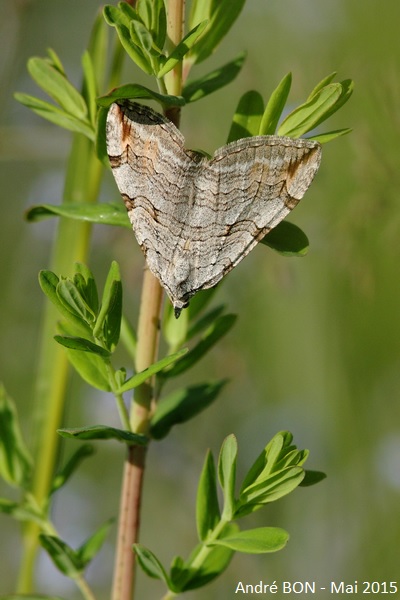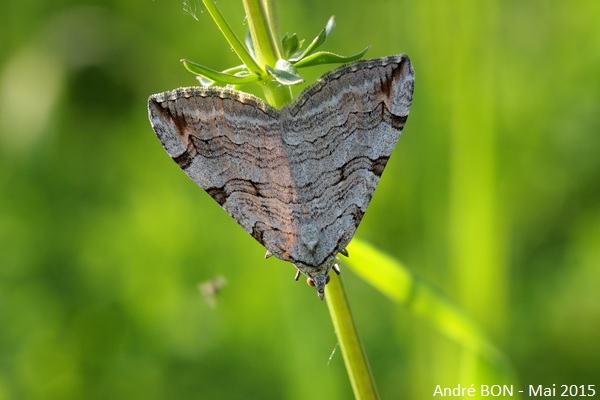

| Treble-bar - Lesser Treble-bar (Aplocera plagiata-efformata (Linnaeus, 1758 - Guenée, 1858)) |


|
|
Scientific name: Aplocera plagiata-efformata (Linnaeus, 1758 - Guenée, 1858) Common name: Treble-bar - Lesser Treble-bar Other names: Treble-bar for Aplocera plagiata; Lesser Treble-bar for Aplocera efformata. French name: Triple raie - Anaïte plombée Order: Lepidoptera Suborder: Heterocera Family: Geometridae Subfamily: Larentiinae Wingspan: 27 to 35 mm. Aplocera plagiata is generally a slightly larger size than Aplocera efformata. Biotope: Meadows, wastelands, road sides, woodland edges, clearings. Geographic area: Aplocera plagiata: Holarctic region, North America, Europe, temperate Asia. Aplocera efformata : Morocco, southern and central Europe east to Asia Minor, north to southern Scandinavia. Flight time: May to July then August to October. Number of generations : 2 Caterpillar: Reddish with darker longitudinal lines. Host plant: Common Saint John's Wort (Hypericum perforatum). |
The Treble-bar (Aplocera plagiata) and the Lesser Treble-bar (Aplocera efformata) are difficult to separate on field pictures. The fore wings show a more or less greyish ground colour. They are crossed by three broad dark brown bars made of thinner lines and ending by dark brown patches on the costal edge. The apex of the wing bear a reddish brown diagonal marking barred by short black hyphens. The hind wings are greyish white. These moths over winter in the caterpillar state. Here is some information to tell both species apart: The best method is to have a look at the tip of the abdomen. The tip of the abdomen is lengthy and pointed on male Aplocera plagiata, it is shorter and more blunt on Aplocera efformata. Abdominal segments 7 and 8 are narrower on female Aplocera plagiata giving a stepped appearance that is not seen on Aplocera efformata where the final narrowing is more continuous The basal bar draws a very sharp angle close to the costal edge on Aplocera efformata. This angle is less sharp on Aplocera plagiata. |
| [To know more about the Treble-bar - Lesser Treble-bar] [Next picture] [Top] |

|
Here is again a bird watching session on the banks of the Doubs river which ends with pictures of moths. |
| [To know more about the Treble-bar - Lesser Treble-bar] [Previous picture] [Top] |

|
I remained very careful on species identification. The angle of the basal bar close to the costal edge seems to indicate Aplocera plagiata but I am not totally sure. |